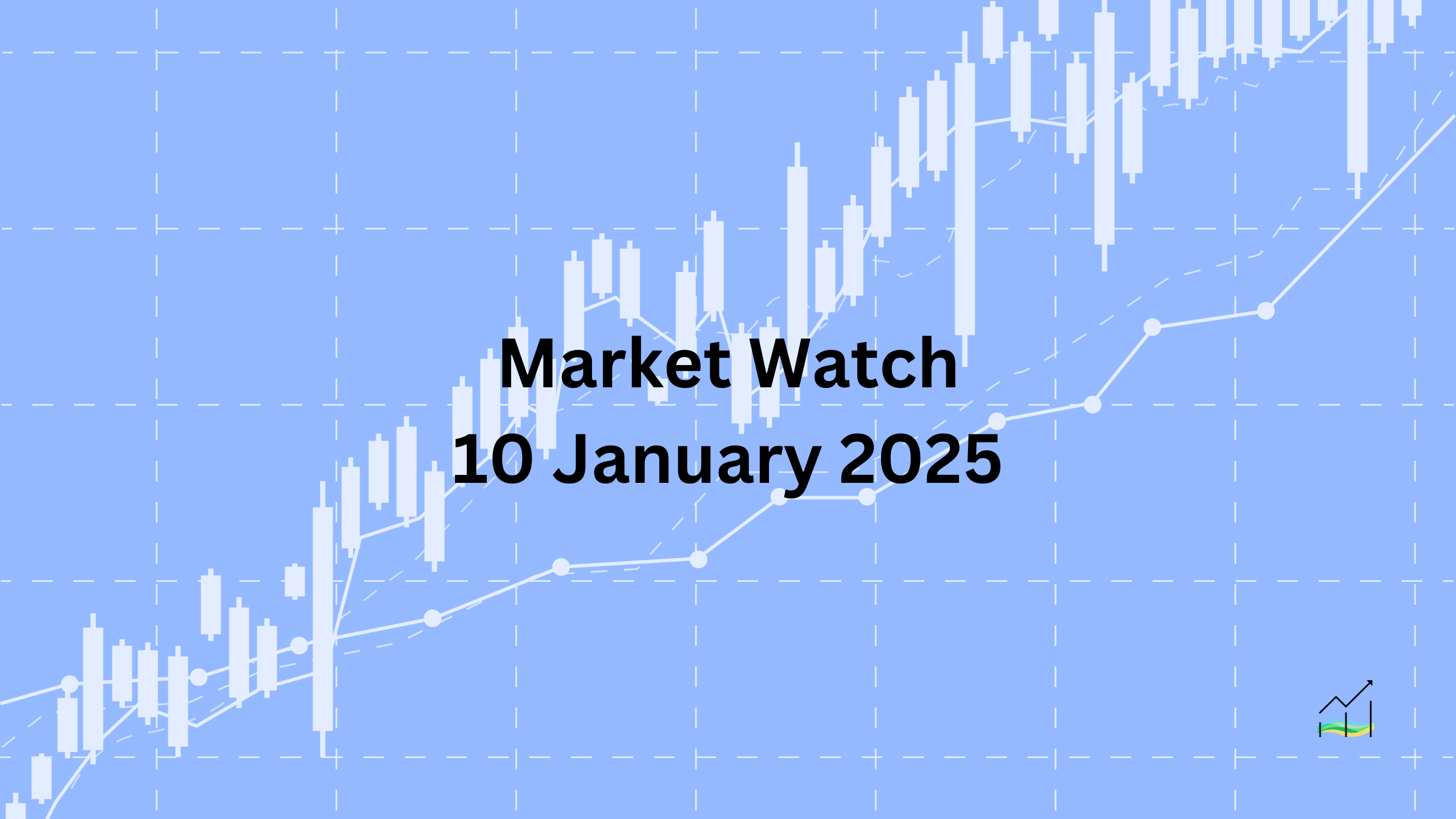10/01/2025 Market Watch

Market Watch: Market Reactions Ahead of Employment Report
The US dollar is exhibiting mixed consolidation today as markets await the upcoming employment report. Recent statements from Federal Reserve officials suggest that a rate cut this month is unlikely, with the bar set very high. Next month's employment report will include the annual benchmark revisions, which could provide additional insights.
Sterling has stabilized after a tumultuous week, though it remains the weakest among the G10 currencies, having declined nearly 1%. Conversely, the Canadian dollar is the only G10 currency to strengthen against the US dollar, gaining approximately 0.25%, as the USD/CAD pair trades slightly above 1.44. Emerging market currencies show varied performances, with Asia Pacific currencies generally outperforming their Central European counterparts. The Chinese yuan remains at the lower end of its trading band against the dollar.
Equity markets are under pressure. The Nikkei and China's CSI 300 index, along with mainland shares in Hong Kong, all fell over 1%. Europe's Stoxx 600 and US equity indices are also slightly lower. Bond yields are on the rise, with the 10-year US Treasury yield firming to 4.70%, up about seven basis points this week. The UK 10-year Gilt yield rose three basis points to approximately 4.84%, marking a 23 basis point increase for the week.
In commodities, gold continues its upward trend, reaching its highest level since mid-December, near $2,680. Oil prices are surging, with February WTI crude climbing over 2% to around $75.80, driven by declining inventories, cold weather, and potential sanctions on Russia and Iran.
United States of America
The Dollar Index has been capped near 109.40 over the past two sessions, with the market turning cautious ahead of the jobs report. Concerns about a potential recession were heightened by an unexpected $7.5 billion decline in November consumer credit, driven by a $13.7 billion drop in revolving credit, the largest since May 2020. This decline might be related to the holiday season, despite personal consumption expenditure increasing by 0.4% in November, following a 0.3% rise in October. Consumption growth, which surged to 3.7% in Q3, may have moderated to around 2.8% in Q4.
The December jobs report is pivotal for market movements. US nonfarm payrolls have shown a sawtooth pattern since last January, with alternating strong and weak months. November's job growth of 227,000 significantly outpaced October's 36,000. For this pattern to continue, December's job growth should be below November's figure. Despite a weak ADP report, Bloomberg's median forecast for December is 165,000, with the six-month average at 143,000 and an average growth of 180,000 through November. The unemployment rate, which peaked at 4.3% last July, remained steady at 4.2% in November and is expected to hold. A 0.3% increase in average hourly earnings would maintain the year-over-year wage growth at 4.0%, keeping it above the CPI.
Key Points:
- Dollar Index capped at 109.40 amid caution before the jobs report.
- November saw a significant drop in consumer credit, particularly revolving credit.
- Personal consumption expenditure rose in November but may slow in Q4.
- December jobs report expected to show slower growth, with forecasts around 165,000.
- Unemployment rate expected to remain at 4.2%, with wage growth steady at 4.0%.
Australia
The Australian dollar recently approached its lowest level since September 2022, hitting $0.6172 before struggling to rise above $0.6200. Even today, it has barely moved past $0.6205. The lower Bollinger Band is positioned near $0.6145, and the next technical support level is around $0.6100. The central bank has shown hesitation to initiate interest rate cuts, citing strong demand as a concern. Today, it reported a 0.4% increase in household spending for November, following a revised 0.9% rise in October. The average monthly increase in household spending over the first nine months of the year was 0.2%. The futures market suggests a three-quarter probability of a quarter-point rate cut at the next meeting on February 18 and anticipates around 75 basis points of easing this year.
Key Points:
- Australian dollar near September 2022 lows, struggling around $0.6200.
- Technical support levels at $0.6145 and $0.6100.
- Central bank cautious about rate cuts due to strong demand.
- Household spending rose by 0.4% in November, following a 0.9% increase in October.
- Futures market expects a potential rate cut at the February meeting and 75 basis points of easing this year.
Canada
The US dollar traded within a CAD1.4280-CAD1.4450 range on Monday and continues to strengthen, marking its fourth consecutive session above CAD1.44 during European trading. The upcoming employment report may test this range. Canada's labor market has shown improvement, with an average of 37,000 jobs added over the past three months, up from the 27,500 average in the previous eight months. Full-time job growth has been particularly strong, averaging 64,000 per month for the three months through November, compared to under 10,000 per month earlier. Despite this, the unemployment rate rose to 6.8% in November, the highest since September 2021. The Bank of Canada attributes this to new labor market entrants taking longer to find jobs, rather than an increase in layoffs. The swaps market suggests nearly an 80% probability of a quarter-point rate cut at the central bank's January 19 meeting, following two half-point cuts last year. Around 55-60 basis points of rate cuts are expected for the year.
Key Points:
- US dollar remains strong against the Canadian dollar, trading above CAD1.44.
- Canadian labor market has improved, with recent job growth averaging 37,000 jobs per month.
- Full-time job growth has been robust, averaging 64,000 jobs per month in the last three months.
- Unemployment rate rose to 6.8% in November, attributed to longer job search durations for new workers.
- Market expects a quarter-point rate cut in January and up to 60 basis points of cuts throughout the year.
China
Despite efforts by the People's Bank of China (PBOC), the US dollar is testing the stronger side of the 2% band against the yuan. The PBOC has set the dollar's reference rate within a narrow range between CNY7.1876 and CNY7.1887 in recent sessions, with today's slightly firmer fix at CNY7.1891. To alleviate pressure on bond yields, the PBOC announced it will suspend its purchases, with the 10-year yield rising slightly to about 1.64%. Although the offshore market usually adheres to the onshore band, this has not been the case recently. Next week, the PBOC plans to sell CNH60 billion (approximately $8.2 billion) in six-month bills in Hong Kong to absorb excess liquidity and ease pressure on the offshore yuan. This move represents the largest bill offering since the PBOC introduced this tool in 2018, adding to the CNH140 billion of outstanding bills. The US dollar remains within the range established on December 31, between CNH7.3050 and CNH7.3700.
Key Points:
- US dollar testing the strong side of the yuan's 2% band, with a recent fix at CNY7.1891.
- PBOC to suspend bond purchases to reduce yield pressure; 10-year yield rises to 1.64%.
- Offshore market diverging from onshore band; PBOC to sell CNH60 billion in bills in Hong Kong.
- Largest bill offering since 2018 to absorb liquidity and ease offshore yuan pressure.
- Dollar remains within the CNH7.3050-CNH7.3700 range set on December 31.
Europe
Today, the euro remains within last week's range of approximately $1.0225 to $1.0460. After settling slightly below $1.0310 last week, it continues to hover around that level. A notable development is the narrowing of the US two-year yield premium over Germany for the third consecutive week. This spread, which peaked in mid-December at just under 235 basis points, has now decreased to around 203 basis points, marking the lowest level since the Federal Reserve's rate cut on November 7. While the euro's exchange rate doesn't directly correlate with this differential, it often reacts to the direction of the spread.
Key Points:
- Euro remains within last week's range of ~$1.0225-$1.0460.
- US two-year yield premium over Germany has narrowed for three weeks.
- Spread decreased from 235 bp in mid-December to 203 bp today.
- Euro shows sensitivity to changes in the US-Germany yield spread direction.
Japan
Japanese officials have successfully slowed the yen's decline without the need for intervention. The US dollar nearly hit JPY158 on December 20, its highest since July, and peaked around JPY158.55 this week as US 10-year yields approached 4.73%, their highest since last April. The exchange rate is expected to respond to the US Treasury's reaction to the employment report, with initial support near JPY157.40. However, a break below this week's low of approximately JPY156.25 would be more technically significant. The Bank of Japan (BOJ) is reportedly considering raising its inflation forecasts due to rising rice prices and yen weakness, fueling speculation about potential rate hikes. The swaps market has adjusted slightly, now pricing in a 13 basis point increase for this month and 20 basis points for March. The next significant BOJ communication will come from Deputy Governor Himino on January 14.
Key Points:
- Japanese officials have slowed the yen's decline; dollar peaked near JPY158.55.
- The exchange rate may react to the US employment report.
- Initial support near JPY157.40; breaking JPY156.25 would be significant.
- BOJ may raise inflation forecasts and possibly hike rates.
- Swaps market pricing a 13 bp increase this month and 20 bp for March.
- BOJ Deputy Governor Himino's speech on January 14 is a key upcoming event.
United Kingdom
Sterling has experienced a challenging few days but has found some stability today. After peaking near $1.2575 on Wednesday, it hit a low around $1.2240 yesterday. Today, it has maintained levels above $1.2265 and is hovering around $1.23 in European trading. Sterling settled below its lower Bollinger Band yesterday, which is currently around $1.2295. Unlike in the US, where higher interest rates have bolstered the dollar, the UK's rising rates indicate capital flight. This surge in rates pressures households as mortgage rates adjust, which could strain the economy and worsen the fiscal outlook, leading to a vicious cycle of higher rates and a weaker sterling. The UK's 30-year yield nearly reached 5.5% yesterday, the highest since 1998, while the 10-year yield climbed above 4.92%, the highest since 2008. Although yields have eased slightly, they remain a few basis points above yesterday's close.
Key Points:
- Sterling has stabilized after a rough few days, trading around $1.23.
- UK interest rates are rising, indicating capital flight and economic strain.
- The UK's 30-year and 10-year yields reached their highest levels since 1998 and 2008.
- Yields remain slightly above yesterday's settlement.
© 2025 SKONE Enterprise (003319453-V). All rights reserved.
The content on this site is for informational purposes only and does not constitute financial advice.


